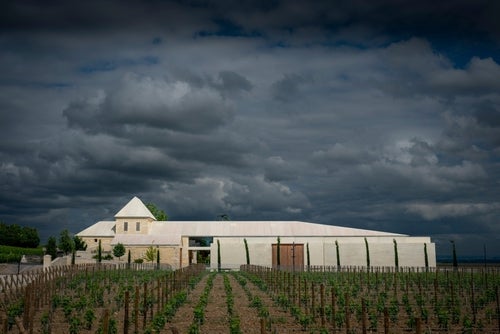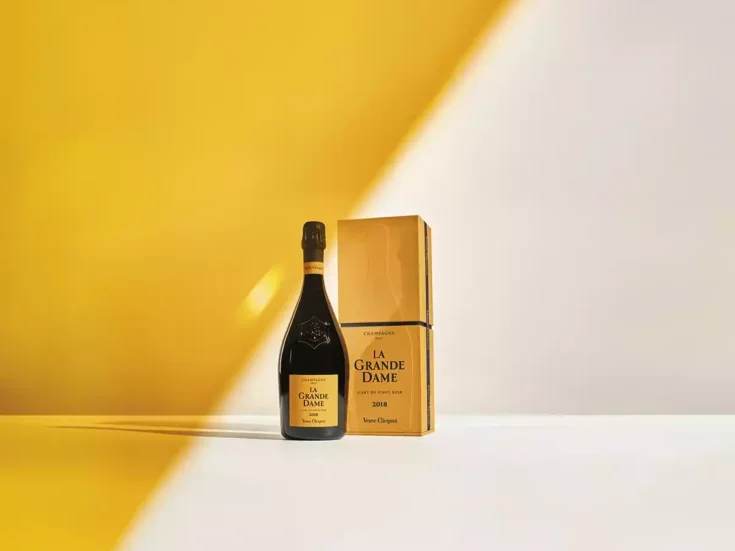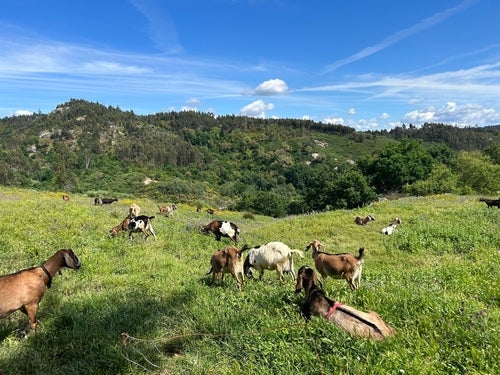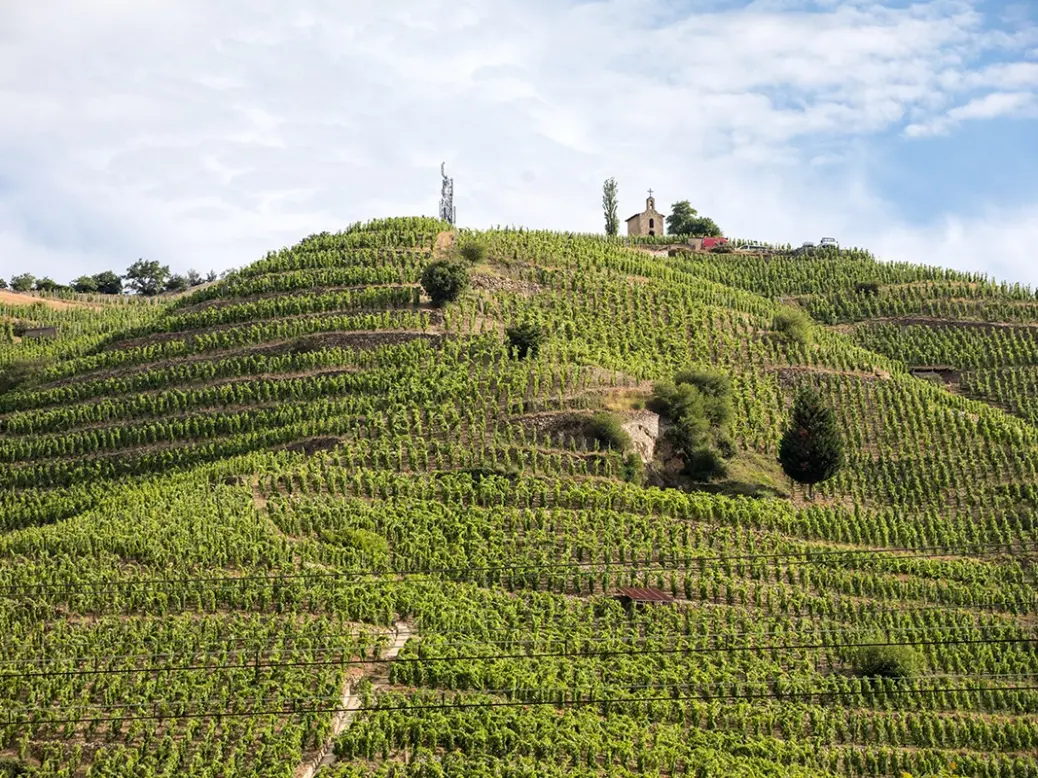
Growers in the Rhône have echoed their peers elsewhere in France in claiming the wines of the difficult 2021 vintage herald “a new classicism.” The reality, as Simon Field MW discovered, is rather more complex.
An encounter with the 2021 vintage in the Rhône can provoke a somewhat schizophrenic reaction. On paper, there is no doubting the exceptionally difficult conditions endured by the vignerons; and yet, now and then, and often just when least expected, what emerges from the glass might well be a wine of quite exceptional quality. Or it might not! “New classicism” is a phrase that has been widely used to describe this challenging year through the great vineyards of France. The phlegmatic Michel Chapoutier actively celebrates a return to the styles of the 1990s, adding that “this atypical vintage is a chance for the soil to express itself.” This inclination to equate lighter years with “terroir vintages” may be spurious; there again, it may not. Sometimes it is hard to tell with a year such as 2021, and I have seldom experienced so much variation, often in a flight of wines from the same producer. Heterogeneous is the word, then; the good, the bad, and the … well, many wines that rather seem to defy Chapoutier with their amorphous mediocrity. The great Rhône guru John Livingstone-Learmonth calls it well, as usual: “2021 is a vintage with some jolies choses and a higher level of aromatics than the sunbaked vintages.” Quite so.
The Rhône had enjoyed six years of plenty, just shy of the biblical template. After the depredations of the Drosophila suzukii fruit fly in 2014, an impressive sextet, with only 2017, early in the season at least, challenging the hegemony, with threats of frost and coulure. If 2015 was more septentrional of inclination, then 2017 pointed toward the Mediterranean, a pattern echoed in 2018, 2019, and 2020, when the risk of drought was ever-present. 2021 broke this pattern dramatically, its main challenges posed by late and often severe frost, an exceptionally wet spring, and an unpredictable and lackluster summer. Humidity rather than heat, drips of rain rather than drought! Overall alcohol levels slipped by a whole degree by volume, and the yields were more than five percent lower than the five-year average. The 2.54 million hectoliters of juice were shared out as follows: 78% red, 12% white, and 10% rosé, the figure for the white wines, unsurprisingly, up on previous vintages. The approbation for the white wines is widespread, however; Christophe Pichon in Condrieu speaks for many in praising the “lovely maturity of the whites with more acidity and freshness, less of the fierce sunshine.”
A Janus-like vintage, then. Which is not inherently unlikely if one considers the lie of the land; the Rhône is a tale of two valleys, divided by a common river, upstream tilting at the mono-variety purity of the Burgundian model, whereas downstream is painted in broader brushstrokes, its palette more colorful and its music more sensuous. In 2021, for all that, the stylistic polarity was often less geographically posited, however, and success could rest on the pinhead of chance; to pick today or to wait; to add a few stems or none at all; to reduce the time of cuvaison, and so forth. Nuanced sensitivity in the winery is fundamental in years such as this, for all the talk of a “terroir” vintage. Its antithesis, also a cliché, is the “millésime de vigneron.” 2021 falls into the second category.
The North
A relatively advanced vegetative cycle after a mild winter can often be problematic. And so it was to prove, with the most brutal frost on April 7–8. Unpredictable as well as brutal. Pierre Rostaing recalls how a vineyard could be decimated, the green shoots blackened and ruined, whereas the neighbouring plot would be left untouched. Yields were sacrificed and optimism on the quality front was challenged further by the ensuing persistent rain, which threatened not only coulure, but also black rot and mildew. Flowering was difficult, to put it mildly, and a series of hailstorms in the early summer did little to assist the weary vignerons. A mini-heatwave ensured that veraison ensued without incident, but thereafter intermittent rain and the threat of further storms prompted picking dates that were, on average, up to two weeks later than 2020. It was the year of the sorting table, of widespread chaptalization, and of incredibly hard work. The fact that the reward was not merely that of astringent and coarse red wines is a testament to diligence and a refusal to panic in the face of adversity. Jean-Louis Chave is not alone in advising that the virtues latent in the older vines on the slopes are key in a tricky year; saturation and rot are less of a threat when the water has an escape route, and the older vines dig deep in every sense. Even the whites, generally widely praised, are not immune to this truism; a comparison between Cuilleron’s older vine Condrieu Vernon with his Verlieu illustrates this well; one wine is outstanding, the other disappointing.
The South
Frost was the villain south of Montélimar, too. Unpredictable temperatures throughout the growing season, no heat spikes, and random thunderstorms later in July all served to test vignerons. An added challenge was posed by more than 4 inches (100mm) of rain on September 15, just at the wrong time. If the early-budders, Syrah included, were jeopardized by the frost, then the late-ripeners were also under threat. Despite this, the varieties in the latter category probably fared better, especially Mourvèdre, Cinsault, and Carignan. The quality of the Grenache itself was mixed, some of it, almost unaccountably, very good indeed (see my notes). Overall, however, thin skins prevailed, with a concomitant anxiety about rot; the best of the resulting wines focus on red rather than black fruit, on lean but elegant tannins rather than any attempts to overcompensate with an ambitious extraction regime or indulgent use of oak.
One feature in the years of canicule has been the raised profile of the villages at altitude, many of them in the protective lee of the Dentelles de Montmirail. The flight to the hills was less obvious in 2021, however, and relatively lower-lying Châteuneuf-du-Pape was able to reclaim some of the figurative ground recently ceded to Gigondas, in particular, and to a lesser extent, to villages such as Séguret and Beaumes de Venise. Châteauneuf was also spared the worst of the frost, and its wines were generally more impressive than those of Vinsobres (often angular and lean) or Rasteau (for once the grapes in this warm enclave struggled to ripen). Cairanne lacked its normal zip and forward fruit character, and over the river in Lirac, the frost severely reduced the crop. There is a lot of variety in Châteauneuf, however; often, as noted, from the same winemaker. I loved, for example, the pure Grenache (Impériale) from Raimond Usseglio but was less taken by the generic cuvée. The same phenomenon rated the Vieilles Vignes wine at Marcoux significantly higher than the “basic” Châteauneuf. Vincent Estevenin echoes Jean-Louis Chave in highlighting the significance of old vines and sloped vineyards. QED.
Particular praise must be reserved for the white wines of Châteauneuf-du-Pape, the palette of varieties deployed with dexterity across the board. And where there was only one variety in play, as with Beaucastel’s Vieilles Vignes Roussanne, quality was also exceptionally high. Nor should one forget the rosé wines of Tavel, poised and satisfying overall, and maybe heralding a long-overdue resurrection of the category. A highly challenging and variable vintage overall then, both chaotic and, compared with its immediate forebears, atypical. Normal service resumes in 2022, it would seem—the new normal… which is far from “classic.”
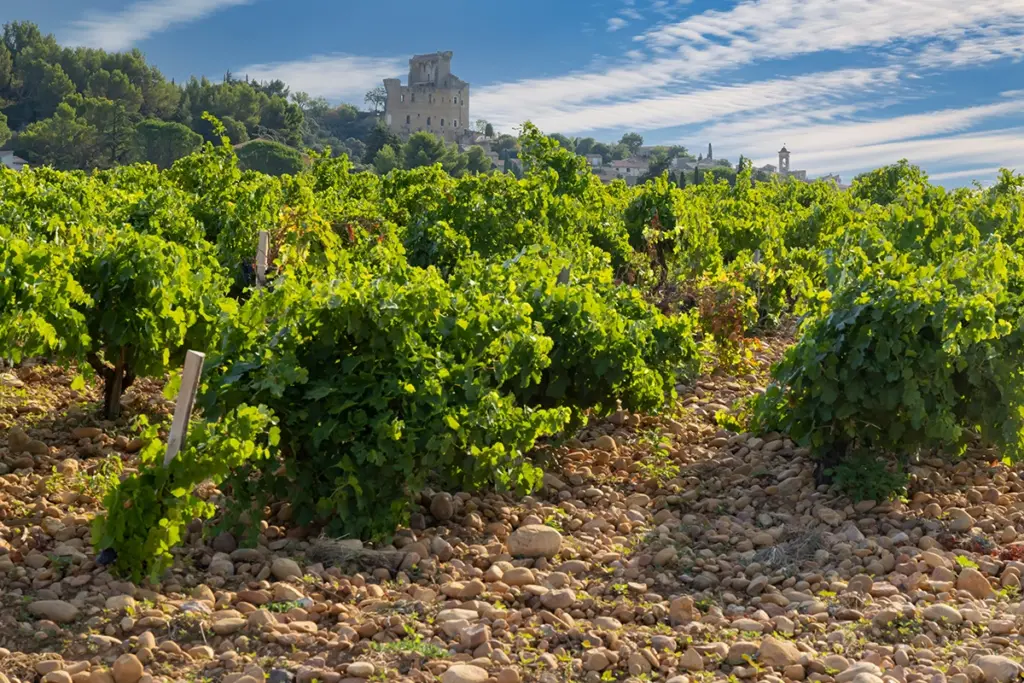
Rhône 2021 highlights
2021 Yves Cuilleron Condrieu Vernon
Melted butter, shortcrust pastry, and candied lemon are the chief impressions on the nose. More air gives the mellow richness of ripe Golden Delicious flesh. The palate is generous, with spicy notions of maple syrup. With more temperature, the richer notions get ever richer, the body becomes mellower, the autolysis becomes creamier. Everything about this spells generosity and richness. | 93
2021 Paul Jaboulet Aîné Crozes-Hermitage La Mule Blanche
The reawakening of this famous house continues apace, its full organic conversion a significant achievement by Caroline Frey. It is wonderful to revisit this old favorite, then, and to recall the quality of its glory days, reclaimed with Proustian certainty. The blend is shared equally between Roussanne and Marsanne, the former lending an orchard fruit profile, the latter a texture built around hawthorn and acacia. All is harmony with this wine, and all is harmony, enfin, chez Jaboulet! | 94
2021 Emmanuel Darnaud Crozes-Hermitage Les Trois Chênes
Emmanuel is very excited finally to have taken on the small parcel in Hermitage, long coveted, from his father-in-law, the redoubtable Bernard Faurie. The animation has not distracted him from his Crozes however, and this is one of the best Trois Chênes yet, the eponymous wood no longer interfering with the purity of red fruit, and the lower yield (20% down) serving to concentrate the mind and the must alike. Some 40% of the grapes were destemmed. There is a hint of black olive, too, which I tend to appreciate in a quality Crozes-Hermitage. | 92
2021 Domaine Marc Sorrel Hermitage Blanc les Rocoules
Marc has finally retired, it seems, and taken up residence in Bandol. An interesting choice for a man of Syrah! A propos, le fils Guillaume is frank about the problems of harvesting the red grapes in 2021 and the multiple tris necessitated by the rainy conditions. He is far less circumspect when discussing the whites—with reason, on the evidence of this superb Rocoules. The blend of 90% Marsanne and 10% Roussanne is from older vines, some of which have struggled with the granite for more than 80 years. In 2021, the struggle was more than justified; nutty, creamy notes vie with white pepper, ripe fruit, which flirts with exoticism, and a strong finish. Most impressive. | 95
2021 Franck Balthazar Cornas Cuvée Casimir
Casimir is a familial name, I infer, rather than a lieu-dit. This cuvée is hewn from old vines in Les Mazards and younger vines in Lègre, both of which are lieux-dits. Aged for 18 months in demi-muid, the 2021 is beautifully aromatic (myrtle, loganberry, smoke, and meat) and has a delicious twist of rusticity on the palate, which, together with an unexpected salinity on the finish, make this a stand-out wine in a challenging year. | 94
2021 Domaine Bosquet des Papes Châteauneuf-du-Pape Chante le Merle
A triumphant song from the blackbird; Grenache-dominated (80%), much of it from 90-year-old vines, this wine displays all the characteristics that one has learned to love in this village; a savory, herbal complexity beyond reassuringly intense dark fruit, powerful yet precise tannins, and a richly rewarding mid-palate weight. All tied up, almost miraculously, by a weave of harmony and elegance. | 94
2021 Famille Isabelle Ferrando Châteauneuf-du-Pape Blanc
A terrific vintage for white Châteauneuf, from the splendor of the solitary varietal Roussannne Vieilles Vignes from Beaucastel, all the way to examples using six varieties, such as Clos des Papes. Saint Prefert has now been eponymously rebranded, but the white is still dominated by Clairette, a speciality of the house. The balance is made up of 40% Roussanne, which adds a pleasing pithy aromatic and perfectly complements the textured and honied core. Chalky acidity provides a firm backdrop. Around 40% of the crop may have been lost to the frost, but what remains should be cherished. | 95
2021 Domaine de la Janasse Châteauneuf-du-Pape Cuvée Chaupin
100% Grenache, this one, from plots dominated by sand and clay, à la Rayas. When it came to selecting a handful of stand-out wines from the vintage, it was evident that Châteauneuf, bucking a trend, was faring well, and also, rather surprisingly, that the Grenache-based wines were often outstanding; the Imperial from Raimond Usseglio is another example. The Chaupin is a joyful cornucopia of ripe fruit, floral aromatics, and delicate savory power, with a haunting and persistent finish. A glorious cadenza. | 94–95
2021 Domaine Marcoux Châteauneuf-du-Pape Vieilles Vignes
The qualitative gap between the generic and the old-vine cuvée seems broader than in some years; it’s all about precision, harmony, and length. This one has all three in spades. Vincent Estevenin is justly proud of this wine, the interplay between the sweet and the herbal, between the savory and the floral, all beautifully rendered. A strong contender for the red wine of the vintage in my book. | 95
2021 Domaine Moulin-de-la Gardette Gigondas Ventabren
Unlike the relatively homogenous terrain of the village of Châteauneuf-du-Pape, Gigondas is etched into the hillside, with corresponding stylistic differences depending on location and aspect. There are quality differences, too, in 2021, more so than in most years. Near the top of the tree is Jean-Baptiste Meunier’s old-vine Grenache-dominated Ventabren, which has been aged for just over a year in foudre. A dark seascape of a wine, with towering waves of tannin and immeasurable depth, Ventabren excels in a year that, Jean-Baptiste shrugs, was punctuated by frost, mildew, and botrytis. | 93

